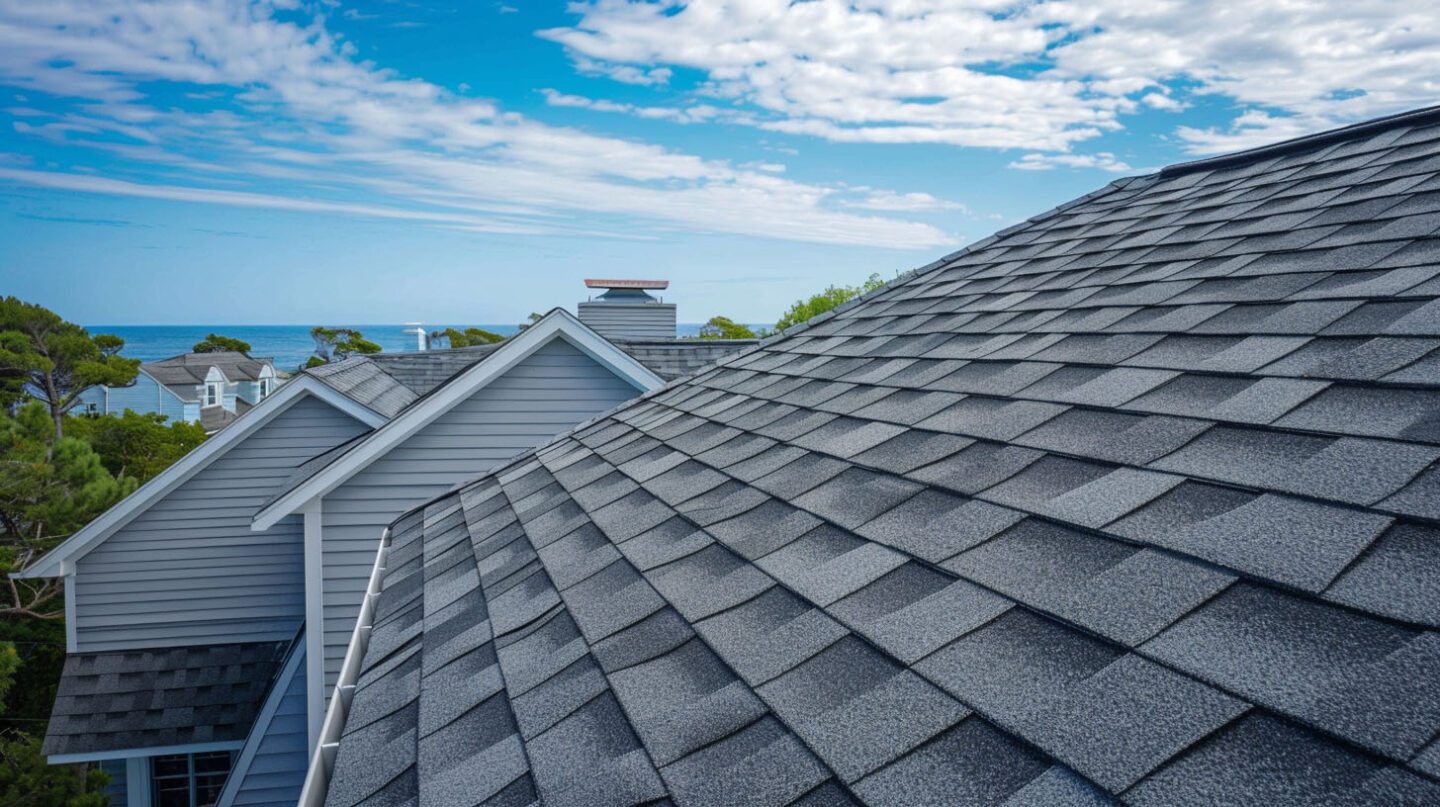Your roof is your home’s shield against the elements. Here in Cary, North Carolina, we may not be on the coast, but we still face strong winds from thunderstorms and the remnants of tropical systems. Have you ever wondered what keeps your shingles secure during a powerful gust? The secret lies in the nailing pattern. Proper nailing is critical for wind resistance, ensuring your roof remains intact. At The Shingle Master, we understand that the right technique, whether for coastal areas or inland homes, is essential for protecting what matters most.
Understanding Wind Zones in Roofing
Different roofing environments exhibit varying wind conditions, influencing the design and installation of roofing systems. Coastal zones often face strong winds and severe weather events, necessitating adherence to stringent building codes and specific nailing patterns. In contrast, inland areas generally experience less intense wind uplift and can follow different technical guidelines. Understanding these distinctions allows homeowners, builders, and roofers to make informed decisions regarding quality roofing products, ensuring durability and protection against potential water intrusion and damage from high winds or tree limbs.
Defining Coastal and Inland Construction Environments
Coastal and inland construction environments present distinct challenges related to wind exposure and weather variability. Coastal zones are typically characterized by high wind speeds, particularly from hurricanes, demanding robust roofing systems that meet stringent international building codes. In contrast, inland areas may experience less severe weather but still encounter strong winds and heavy rain, necessitating adherence to local building codes that reflect regional conditions. Purposeful design and quality roofing products are essential for ensuring longevity and durability in both environments.
Wind Speeds and Weather Challenges in Each Zone
Varying wind speeds significantly impact construction strategies in different environments. Coastal areas often face relentless storms and high winds, requiring roofing systems designed for exceptional wind resistance. This includes utilizing quality roofing products that meet stringent international building code standards and manufacturer warranties to combat potential water intrusion. Inland zones, while experiencing strong winds, typically deal with fewer severe weather events. The roofing approaches must still accommodate wind uplift challenges, ensuring durability and protection against varied weather conditions for homeowners.

The Importance of Nailing Patterns for Roof Longevity
Proper nailing patterns are critical components in enhancing a roofing system’s durability and wind resistance. Ensuring that fasteners are strategically placed according to local building codes can significantly mitigate the risks of wind uplift during severe weather events, providing homeowners with peace of mind. Inadequate nailing compromises roofing integrity, leading to potential water intrusion and leaks. By adhering to manufacturer warranties and following the home builder’s guide, residents can maximize their roofs’ lifespan and withstand the challenges presented by unpredictable winds.
How Proper Nailing Protects Against Wind Damage
A robust roofing system relies heavily on proper nailing techniques to withstand severe weather conditions. Correctly placed fasteners enhance the wind resistance of shingles and other roofing materials, mitigating the risk of water intrusion during high winds and heavy rain. Following the minimum requirements outlined in local building codes ensures nail head integrity and optimal wind uplift resistance. This not only fortifies safety but also extends durability and preserves manufacturer warranties, providing homeowners with peace of mind against potential storm damage.
Consequences of Incorrect Nailing Patterns
Incorrect nailing patterns can significantly compromise a roofing system’s integrity, rendering it vulnerable to severe weather events. Inadequate fastening may lead to wind uplift, resulting in shingles being torn away by strong winds, which can expose the underlayment and increase the risk of water intrusion. Homeowners may face costly repairs due to leaks and other damage caused by unstable roofing. Adhering to local building codes is essential to ensure the durability and performance of roofing materials in coastal and inland environments.
Key Differences in Wind Nailing Patterns: Coastal vs Inland
The main differences in wind nailing patterns between coastal and inland construction zones boil down to one thing: resistance to extreme wind. Coastal zones demand a more aggressive approach to securing roofing materials because the risk of hurricanes and sustained high winds is much greater.
Inland patterns, while still robust, are based on a lower risk profile. However, building standards are evolving, and many best practices from coastal areas are now being adopted inland to protect against severe thunderstorms and tornadoes. Let’s look closer at the specific requirements for each zone.

Coastal Zone Nailing Requirements
In coastal zones, nailing patterns are critical due to the high wind resistance needed against severe weather events. The international building code outlines that fasteners must be positioned within specific minimum requirements to ensure system integrity. Each installation should consider the wind uplift pressure and incorporate quality roofing products that meet or exceed UL and ASTM standards. Properly installed asphalt shingles, utilizing appropriate nail head placements, help mitigate issues such as water intrusion, providing homeowners with enhanced durability and peace of mind.
Inland Zone Standard Practices
Inland areas typically experience different wind conditions than coastal regions, affecting roofing practices significantly. Homeowners in these zones should adhere to local building codes that specify nailing patterns to enhance wind resistance and durability. Standard practices often involve securing asphalt shingles with fasteners placed at minimum intervals along rafters and plywood sheathing. Utilizing quality roofing products and proper underlayment protects against water intrusion and leaks, contributing to the overall longevity of the roofing system and providing peace of mind during severe weather events.
Updated Building Codes Impacting Nailing Patterns
Recent updates to building codes have emphasized the importance of securing roofing systems to withstand high winds and severe weather events. Local building codes now reflect stricter requirements for nailing patterns, particularly in coastal areas, where wind resistance is crucial for preventing water intrusion and roof damage. Homeowners must be familiar with these regulations, as compliance not only ensures structural integrity but also enhances manufacturer warranties. The evolving standards underscore the responsibility of builders to implement proper fasteners and adhere to minimum requirements for enduring performance.
Recent Code Changes for Coastal Construction
The latest updates to building codes for coastal construction reflect a proactive approach to enhance wind resistance and overall roof performance. Emphasizing the use of quality roofing products and fasteners, these revisions focus on minimizing water intrusion and preventing leaks during severe weather events. Homeowners in coastal areas must comply with stricter nailing patterns and impact ratings to withstand high winds, aligning with international building code standards. These changes not only provide peace of mind but also support the durability of roofing systems in harsh environments.
National and FEMA Guidelines for Nailing Patterns
Guidelines set forth by the National and FEMA provide a framework to ensure roofing systems withstand severe weather conditions. These protocols encompass the minimum requirements for nailing patterns, emphasizing the importance of using quality roofing products and fasteners that meet ASTM standards. In coastal regions, where wind resistance is paramount, it’s crucial to adhere to local building codes that align with these national standards, promoting durability and reducing the risk of water intrusion and leaks, ultimately safeguarding homeowners’ investments.

In Summary
In summary, understanding the critical differences in wind nailing patterns between coastal and inland zones is essential for ensuring roof durability and safety. Adhering to updated building codes and following manufacturer guidelines can significantly enhance a roofing system’s performance against severe weather events. By utilizing quality roofing products and proper fasteners, homeowners can gain peace of mind, knowing their homes are better protected against wind uplift and water intrusion, thereby extending the life of their roofing materials.
Frequently Asked Questions
What should homeowners and homebuilders expect from a “successful” coastal building?
A successful coastal building should resist damage from major storms. According to FEMA’s Home Builder’s Guide, this means the foundation remains intact, the roof and walls prevent major water intrusion, and the home is accessible and usable after a design-level wind or flood event. Its durability is key.
How Do Hurricane Resistant Shingles Perform in Wind?
Hurricane-resistant shingles are engineered to withstand high winds. They typically have a high impact rating and meet rigorous ASTM testing standards. When installed with the correct nailing pattern (usually six nails), these shingles have enhanced adhesion and tear resistance, which helps them stay in place during severe weather.
Is coastal construction that much different from inland construction?
Yes, coastal construction is significantly different. It must account for higher wind speeds, corrosive salt air, and flooding risks. This requires stronger materials, specialized engineering, and more robust building techniques—like enhanced nailing patterns—to ensure the structure’s durability and safety in a more severe weather environment.
Read our blog: Are Solar Shingles Viable on Shaded Lots? An Output Reality Check


